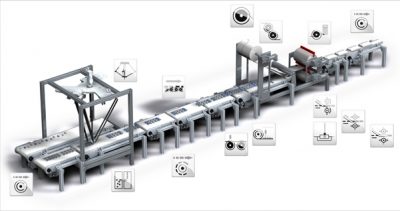Lenze Announces Reusable Robotics Software Modules for its FAST Application Toolbox

Lenze recently announced standardized and reusable robotics software modules as a supplement to its FAST application toolbox for automation and control designs. Using the complete robotic modules from Lenze FAST, mechanical engineers can quickly integrate kinematics into machines tailored to specific material handling tasks.
“Robotics requires kinematics and path planning. By blending expertise in robotics and motion control, Lenze FAST robotics modules eliminate requirements for proprietary systems and complex interface programming for path planning,” said Craig Dahlquist, automation team leader, Lenze.
The new robotics software modules make it easy to integrate robots into an overall automation system and control them accordingly during operation of equipment. The geometric calculation of the robot, the kinematic model, is integrated with a universal method of coordinate transformation developed by Lenze in partnership with universities. Featuring a robotics core offering six degrees of movement, the integrated software ensures maximum freedom.
The Lenze modules utilize PLCopen Part 4 specifications for path planning, which enables implementation of functionalities such as Buffer Mode, Blending, Look-Ahead, and motion smoothing commands. The robotics core supports other standard motion commands: linear, circular, spline and point-to-point. Parameterization enables the efficient execution of pick-and-place and other customized movements, without requiring previous knowledge of robotics. The robot is not instructed how to move until the kinematic model has been assigned to the motion producing modules. So, the path can be planned independently of the kinematics. Reprogramming is unnecessary if kinematics change; only relevant parameters need to be entered.
Lenze offers integrated kinematic modules for Delta2, Delta3, buckling arm and SCARA robots, in addition to modules for different types of gantry robots. In addition to six main axes, auxiliary axes can be programmed, which makes for easier implementation of speed-dependent processes, such as glue application, welding-head guidance, tool operation, and synchronization of a robot to a conveyor belt (i.e., for the purpose of grasping moving objects). A visualization system for testing purposes is provided in the Lenze PLC Designer for every FAST technology module.
“Customers need work-arounds to reduce complexity and expedite time to market for machines. Thanks to FAST robotic modules, a pick-and-place or any complex movement is as easy to position as a single-axis movement task,” adds Dahlquist.





